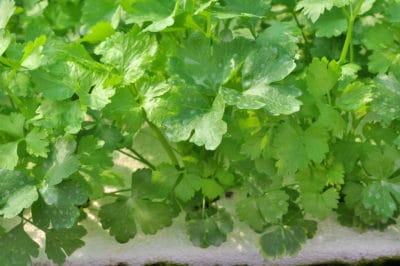About Hydroponics
Hydroculture is the method of growing plants without soil. Hydroponics is a version of hydroculture. The plants are suspended in a rack with their roots in the nutrient solution or may be suspended in an inert medium such as perlite or gravel. Nutrients are added to the solution. Most hydroponic systems are set up to grow plants indoors or in a greenhouse.
Propagating Celery
You can start your celery from seed or use the base of a celery plant you grew or bought at the grocery. Plant seeds about ¼ inch deep in individual soil plugs. They should germinate in about two weeks. Place the base of the celery plant in an inch of water and keep the dish on a sunny windowsill for seven to 10 days. Place in the hydroponic system once roots appear.
Hydroponic Systems
You can find several hydroponic systems for home growing and plans are available to make your own. What all have in common is a tray or container for the plants, a second container or reservoir for the nutrient fluid and a pump to circulate water and provide oxygen. You may also need an overhead light system if you don’t have a greenhouse or an area with lots of natural light.
Nutrients
Most hydroponic kits will include recommendations for nutrient solutions. Follow the directions that came with your kit or ask an experienced hydroponics grower for suggestions. You might also consider adding mineral supplements such as calcium and magnesium as well as humic acid. The two minerals promote strong stalks. Humic acid helps increase nutrient uptake.
Organic Fertilizers
Using organic fertilizers for hydroponics can be challenging, as they may clog tubing, emit odors or raise disease concerns. Pay close attention to the constituents to keep nutrients balanced. However, if finely powdered, thoroughly sieved and completely dissolved in water, you can use:
- Blood Meal
- Bone Ashes
- Hoof, horn or fish meal
- Kelp meal or seaweed powder
- Poultry and animal manure
- Mineral powders
Be Patient
Celery is a long-season crop to begin with. Most varieties need a minimum of 90 days and 120 days isn’t uncommon. When you’re growing it hydroponically, you should add about 10 days to the published maturity date for your variety. Patience, planning and careful attention to the health of your plants are important to growing celery hydroponically.
